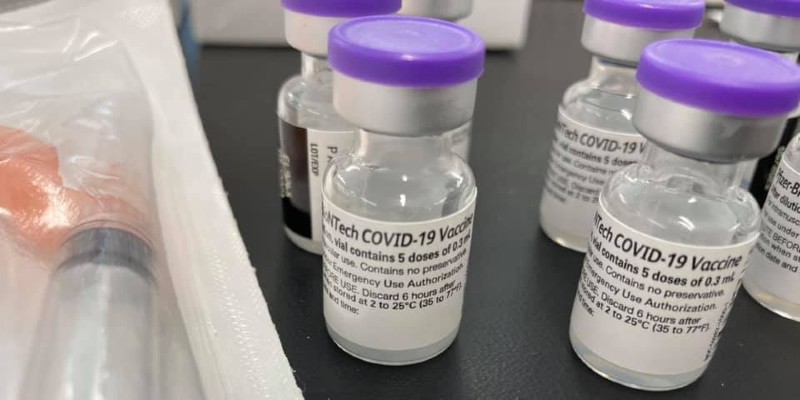The start of the 2021-22 school year is looming — and has already begun for some — and we once again find ourselves in a precarious place. Last year at this time, there was no vaccine, and school districts were scrambling to figure out how to safely and effectively educate children through a crisis that no one knew how to navigate.
Now a safe and effective vaccine is widely available to a significant portion of the population. This should mean that we’re headed into the current school year with confidence in the safety of the students and staff. However, with the more transmissible, more dominant Delta variant, a vaccination rate that has slowed to a crawl with just over 50% of our eligible population (12+) fully vaccinated, and schools returning to full capacity with mixed policies on masking and distancing, there’s concern for outbreaks.
In order to ensure the safest and least disruptive school year, area school districts should require COVID-19 vaccination for all eligible students and staff who do not have a medical or religious reason for exemption.
Requiring vaccination for school attendance is not new. Currently in Illinois:
“all students entering, transferring, or advancing into kindergarten through 12th grades will be required to show proof of receipt of 2 doses of mumps and 2 doses of rubella vaccine. In addition, students entering, transferring, or advancing into kindergarten, 6th, or 9th grades are required to show proof of receipt of 2 doses of varicella vaccine.”
Many of these are given within a child’s first year of life, and boosters are a part of routine check ups as they get older.
A common pushback against requiring a COVID-19 vaccine is its lack of full FDA approval; that an Emergency Use Authorization (EUA) is not sufficient for schools to require it. This PBS article lays out the history of requiring vaccinations in K-12 schools, and addresses this issue offering a portion of the FDA’s emergency use statute which states: “people receiving the drug must be informed ‘of the option to accept or refuse administration of the product’ but also ‘of the consequences, if any, of refusing.’” The full approval process is in motion, and will likely be granted in the next couple of months, but this is an urgent situation that cannot wait two months.
The key word in the statute is consequences. It is time for those who are refusing vaccination to have to deal with consequences, beyond endangering themselves and the health of those around them. Just this week, New York and California announced they will require proof of vaccination for state employees, which include public school employees, with regular testing required of those who refuse to show proof. University of Illinois Laboratory High School will be requiring vaccination for all staff and students, and will follow the same University of Illinois testing protocol for those who have an exemption. This seems like the most logical way to go. While loss of employment or denial of school entry would make the stakes higher, this gets into sticky territory with unions, and at this point late in the summer, would be disruptive to the school year — we’re not advocating for job loss or childcare and schooling crises. The consequence for unvaccinated staff and students will have to be inconvenience.
Some area school districts have released their COVID plans for the upcoming school year. Urbana District 116 has indicated it will be following the most recent CDC guidance for schools, but has not issued a comprehensive plan. Mahomet schools have a masks-optional plan at all grade levels, even elementary schools where almost all students are not eligible for vaccination. Champaign Unit 4 plans to ask for proof of vaccination, requiring mask wearing for those who have not been vaccinated. It’s not entirely clear how that will work at the building level. No districts are utilizing regular surveillance testing, only rapid testing upon request and for those who are symptomatic at school. With the new guidance just issued by the CDC recommending universal masking for K-12 schools, these plans might change.
In their plans, all districts repeatedly emphasize vaccination as the most important layer in COVID protection. We think they need to go beyond encouragement and require proof of vaccination or regular testing through the SHIELD testing program developed at the University of Illinois. It is not yet being utilized by our own districts, but others in the state, such as McLean County Unit 5 School District, will have it available. Stringent measures in this area will not only protect students who are too young to be vaccinated and those who are immunocompromised even with vaccination, but also help schools to maintain the least disruptive year possible. Unvaccinated students and staff, especially in schools without a solid masking policy, are opening the door to superspreading and quarantines. After a 2020-21 school year marked by disruption to learning, it’s incredibly important for students to safely be in school buildings as much as possible.
Champaign-Urbana Public Health District Administrator Julie Pryde, in yesterday’s News-Gazette, stated: “We’re in a mess. Our number one goal is to get people vaccinated as soon as we can because that is the only way we’re going to get out of this mess.” If the combination of the Delta variant and insufficient levels of vaccination are preventing us from making forward progress in this pandemic, then it’s time to pair more masking with vaccine mandates. The temperature of the country related to vaccination is beginning to change, as vocal anti-vaxxers end up hospitalized and changing their tunes and more institutions begin to require COVID vaccinations. Here in C-U we’ve seen vaccine requirements from the University of Illinois and OSF Healthcare. Why not our K-12 schools?
The Editorial Board is Jess Hammie, Julie McClure, and Patrick Singer.








